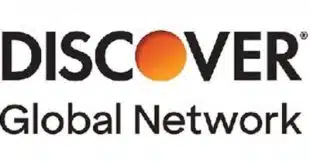In the 2002 Oscar-nominated movie “Catch Me if You Can,” the audience meets one of the greatest con artists of the 1960s, Frank Abagnale (played by Leonardo DiCaprio). In addition to faking his identity and several professions (e.g., airline pilot, surgeon), Abagnale cashed over $2.5 million worth of forged checks before getting caught at the age of 21. The secret to Abagnale’s scam was that he learned to reproduce the MICR (magnetic ink character recognition) numbers from authentic checks, giving him a 30- to 60-day window to pass bad checks before moving on to his next victim.
Fast forward 50 years, and check-cashing fraud is still a major problem. In fact, according to American Banking Association estimates, fraud against bank-deposit accounts was a $2.2 billion issue in 2016. Even more surprising is the primary demographic of the victims—Millennials.
If there’s one key takeaway from this growing problem, it’s this: the local bank—and bank tellers—still play an invaluable role in thwarting check fraud. More on that tomorrow in Part II. First, let’s take a look at how and why this fraud has become so serious.
While MICR-reading technology has evolved over the past 50 years, today’s scammers are taking advantage of the way many people—especially Millennials—prefer to cash checks, which is via their mobile devices. By snapping a picture of the check, mobile deposit bypasses any MICR-reading and authentication technology and relies instead on optical character recognition (OCR).
According to the “2017 Better Business Bureau Scam Tracker Annual Risk Report,” fake check fraud is one of the most common tricks played on Millennials ages 25 to 34. On top of that, the Federal Trade Commission found twice as many Millennials who reported fraud in 2017 lost money compared to people over 70.
Here’s a real-world summary from a CBS News report detailing how a 29-year-old Los Angeles man was scammed:
- In an attempt to make extra money, he did an online search for a mystery-shopper job he could do in his spare time.
- He found a company offering to pay him to evaluate money-transfer businesses, such as Western Union. His first assignment was to deposit a $2,900 check into his bank account, and as soon as the money was available, he was to wire the money back to his “employer” via Western Union.
- A couple of hours after wiring the money, the victim got a call from Wells Fargo letting him know the check was fraudulent. The problem was that he was on the hook for the entire amount.
Federal banking rules require that when someone deposits a check into an account, the bank must make the funds available right away, that is, within a day or two. Even when a check is credited to an account, that does not mean the check is good. Although fraud is detected more quickly now than it was in Frank Abagnale’s day, it can still take nearly two weeks for a bank to discover a bounced check and to follow up asking for the money back. And consumers, not the fraudsters, are on the hook for the funds.
Tomorrow: What consumers (and businesses) can do to avoid check-cashing scams.
—Rahn Rampton is a product manager for Epson America’s POS solutions division.






